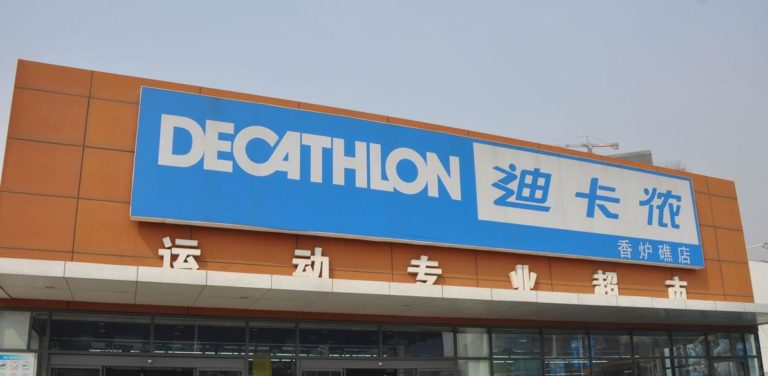When comparing prices in China to Western countries there are often unexpected differences. As the cost of living in China is relatively low, one would expect the prices of products to be lower, but that is not always the case. Price discrepancies in China do not only offer opportunities to leverage those differences but it is also crucial to understand some backgrounds to correctly price goods in China. Hence, it is important to put a lot of thought into a pricing strategy in China.
Here are some strategies that companies use to decide their pricing in China:
- Value-based pricing: prices are based on the value or benefits of the good (beauty products)
- Cost-based pricing: fixed percentage of cost is add-on (manufacturing)
- Subscription pricing: customer pays a monthly or annual charge (gym membership)
- Freemium pricing: the product is free but there is a fee for add-ons (Apps)
The Big Mac Index: what it is and what it measures
The Big Mac Index is a tool by The Economist in 1986 to determine if currencies exchange is at the appropriate level. It uses McDonald’s Big Mac burger for the index as it is a worldwide product in an almost identical form. The Big Mac serves as the benchmark that should cost the same in the US as anywhere else worldwide. Hence when comparing the price of a Big Mac in China (yuan) to the price of a Big Mac in the US (US dollar), one can determine if a currency is over- or undervalued.
For example, in January 2021 a Big Mac was sold for 22.40 yuan in China and US$5.66 in the US. According to the Big Mac index, the exchange rate is determined as following:
US$5.66 / 22.40 yuan = 0.25
When looking at the actual exchange rate of 0.15 January 2021, it turns out that the US dollar had 63.6% overvalue against yuan.
The predictions of the Big Mac Index give investors the opportunity to leverage over- or under valuations in currency exchange rates. In the example, companies or private investors would invest US dollars into yuan as the Chinese currency is heavily undervalued against the US dollar. It is expected that the differences in valuation will equal out as currency moves towards the exchange rate.
Price discrepancies of luxury goods in China
Luxury products are high in demand in China. According to the McKinsey China luxury report 2019, China’s luxury consumption is predicted to double from 770 billion yuan in 2018 to 1.2 trillion yuan in 2025. With this prediction, China is expected to be responsible for almost 40% of the global spending on luxury items in 2025. Indeed, the Chinese luxury market is poised to become the largest in the world.
Luxury items are priced significantly higher in China than in international markets
According to Luca Solca who is the head of luxury goods at Exane BNP Paribas, luxury items cost on average 20% more in China compared to the global average. In fact, when looking at the same Gucci handbag on the official Italian website it is listed at 15,068.96 yuan (1,950 euros) while on the Chinese website it costs 19,500 yuan (2,523.40 euros).
One of the reasons why luxury items are more expensive in China are the tax rates. China imposed a high import tariff which varied around 6.4%-25%. The additional fees arising from China’s tax system were 66% larger than the costs of the departure port, insurance and freight (CIF). Hence, luxury brands increased their prices in China to compensate for the additional cost. When the Chinese government lowered some of the import tariffs in 2018, many luxury brands in China adjusted their prices. For example, in 2019 Prada lowered its prices by 3% due to the decrease in VAT.
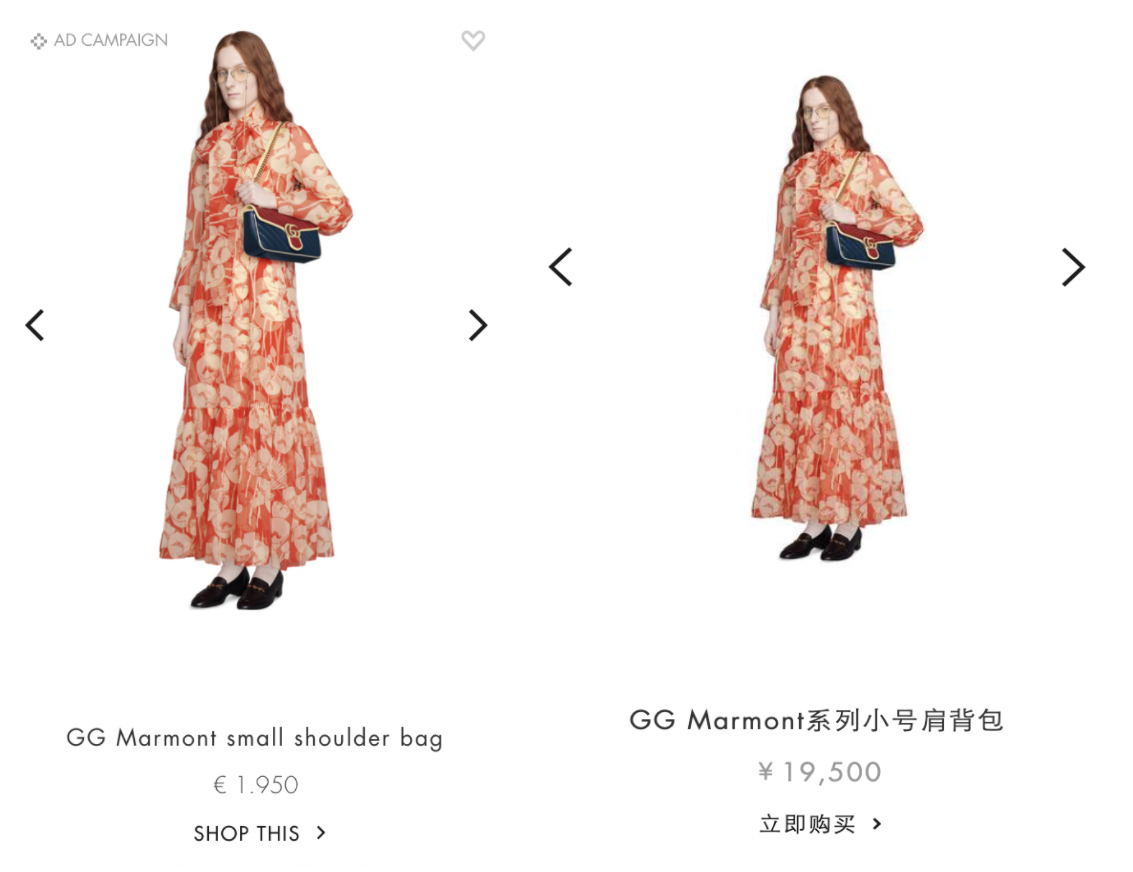
Chinese consumers buy their luxury items in duty-free zones or overseas
Due to the price discrepancies of luxury items, more and more Chinese consumers switch to different sales channels to enjoy cheaper prices. One of these channels is Hainan, an island province of China. Hainan offers a reduced price in luxury items due to its duty-free model. The island had a significant increase in luxury sales during the COVID-19 pandemic as Chinese consumers could not travel overseas. According to Bain’s luxury market report 2020, Hainan sales grew by 98% year-to-date, reaching 21 billion yuan. Hainan’s duty-free model offers Chinese consumers an attractive price reduction. Consumers can enjoy a 25-40% reduction on official listing prices in the beauty category and 10-25% reduction in the fashion and lifestyle category.
Also, overseas luxury item purchases are common for Chinese consumers. In 2015, only 23% of the Chinese luxury purchases occurred in Mainland China, the rest went through overseas purchases. The number slightly increased in 2018 (27%) and 2019 (32%) mainly due to a decrease in import duties.
How brand positioning influences price discrepancies in China
Brand positioning plays an important role when it comes to pricing. When a brand has a high quality or is a luxury brand, consumers want to pay a higher price for the products. Brand positioning can differ in China and Western countries. Companies might take advantage of the different consumer perceptions or needs and position their brand as being more premium in China.
Dickies is positioned as low-end workwear in the USA, but as a fashion brand in China
Dickies is an American apparel company, known for its work and farm clothing items. On their website in the USA, Dickies clearly positions itself as a low-end workwear brand saying: “Dickies now offers a broad spectrum of work garments ranging from work pants and work shirts to denim jeans and women’s workwear.” However, when looking at Dickies Chinese website it appears that the brand positioning is different. Whereas the American website shows clothes as functional and basic, the Chinese website shows a more fashionable display.
The prices on both websites greatly differ. When looking at the most expensive shorts for men in the USA, a pair of shorts called ‘performance work-wear’ for US $49.99 (323.85) appears on Dickies website. In China, the most expensive men’s shorts for Dickies cost US $301 (1950 yuan) and is a leopard print shorts. Dickies provides a great example of not only having an entirely different brand positioning in China and Western countries, but also offering different price points and tailored products to the respective markets.
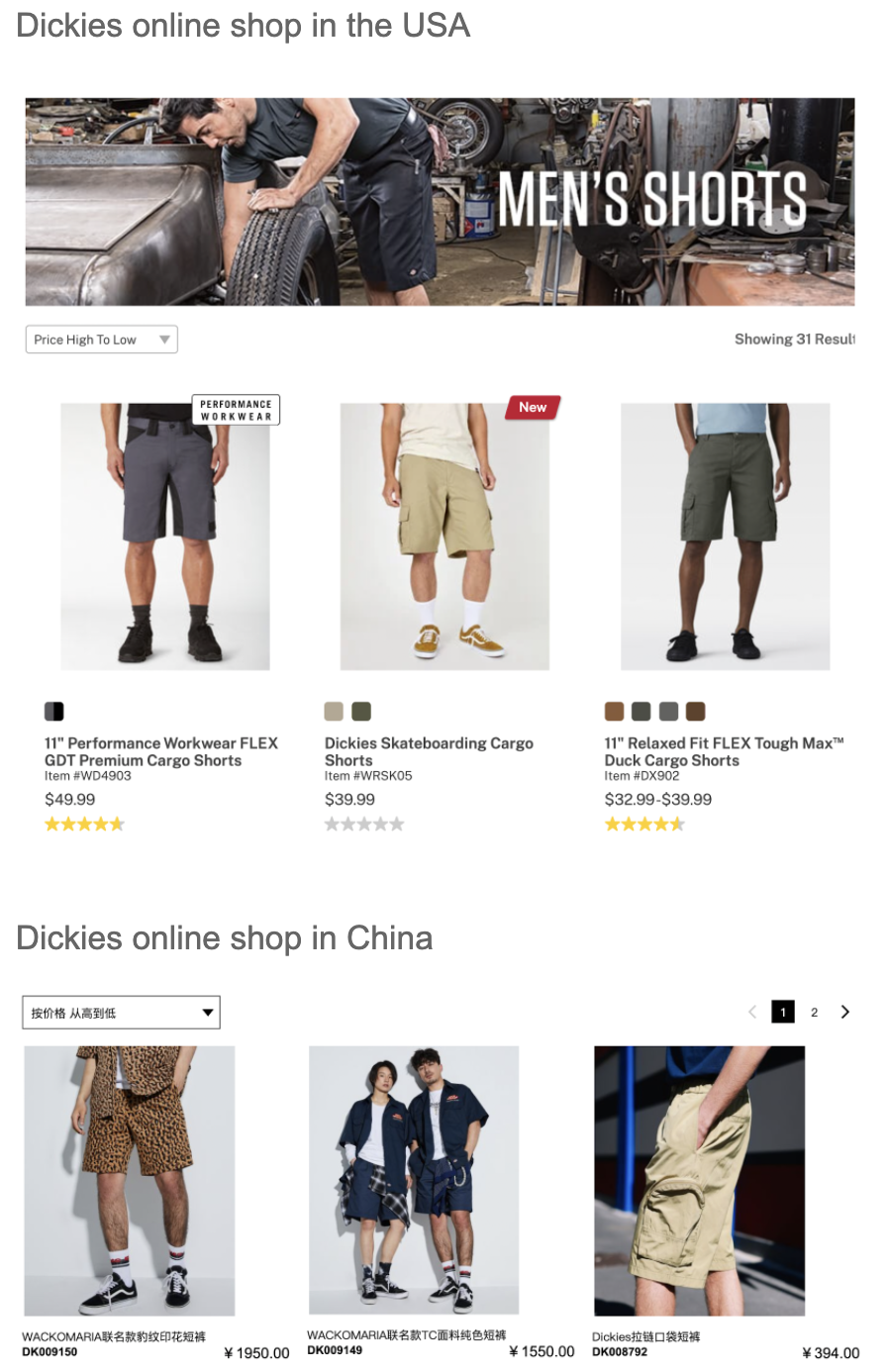
Ferrero Rocher holds a more luxurious brand image in China than in Europe
Italian chocolate producer Ferrero is the second biggest player after Mars in the Chinese chocolate market. Ferrero Rocher comes in a round shape and wrapped inside golden foil. The prices for Ferrero Rocher differ greatly in China, for example, a 300g box of Ferrero Rocher costed 131.5 yuan at the Chinese platform Tmall. However, it costs 92.22 yuan (HK $110.50) at ParknShop in Hong Kong, a 30% price reduction compared to the Mainland China. In London the box of Ferreros is even cheaper, with 76.78 yuan (£8.50) at the British retailer Tesco, which is 42% cheaper than the price on Tmall in Mainland China.
One of the reasons why Ferrero Rocher is so successful in China is because of its packaging. The color gold symbolizes prosperity and wealth in the Chinese culture which makes Ferrero Rocher a popular gift, especially during Chinese New Year. In fact, in 2018 weddings accounted for 15% of Ferrero Rochers sales in China. Ferrero Rocher’s round shape symbolizes harmony, which plays an essential role in the Chinese culture. Ferrero Rocher is not simply a chocolate product in China but more of a gifting brand. The Chinese consumers want to pay premium for a gift, hence the higher prices of Ferrero Rocher are acceptable in Mainland China.

Status symbols drive up products prices in China
Status-worthy logos can be a reason why Chinese consumers want to pay more for an item and hence the goods also have a higher price in China. An example of this phenomenon is Starbucks. When ordering a Starbucks Cafe Latte (Grande) on Tmall, it costs 31.00 yuan ($4.78). The same product at Starbucks in the US costs 23.66 yuan ($3.65). This shows a significant price difference of almost 24%. The price difference is consistent over the beverages from Starbucks. However, when it comes to food items, the pricing changes. Starbucks food items have a lower price in China than in the US.
The reason behind the price discrepancies in China is the Starbucks logo. Chinese consumers want to pay more for a product that entails the Starbucks logo, as they associate it with status in China. It is important to understand that status is highly important in Chinese culture. While the beverage cups contain the Starbucks logo on them, the food items do not.
Shanghai versus major Western cities: How do prices compare?
The cost of living index aims on comparing average expenses incurring in two cities. It includes many consumption variables such as food, utilities, rent, health care, transportation and clothing. The higher the cost of living index, the more expensive a city is.
Shanghai has established itself as one of China’s tier 1 cities and is the most expensive mainland Chinese city to live in. When comparing the city to Western cities, some products are consistently cheaper or more expensive. Shanghai’s current cost of living index is 52.31. This compares closely with Prague’s cost of living index of 51.77. New York and Zurich rank way higher with indexes of 100 and 130.18 respectively.
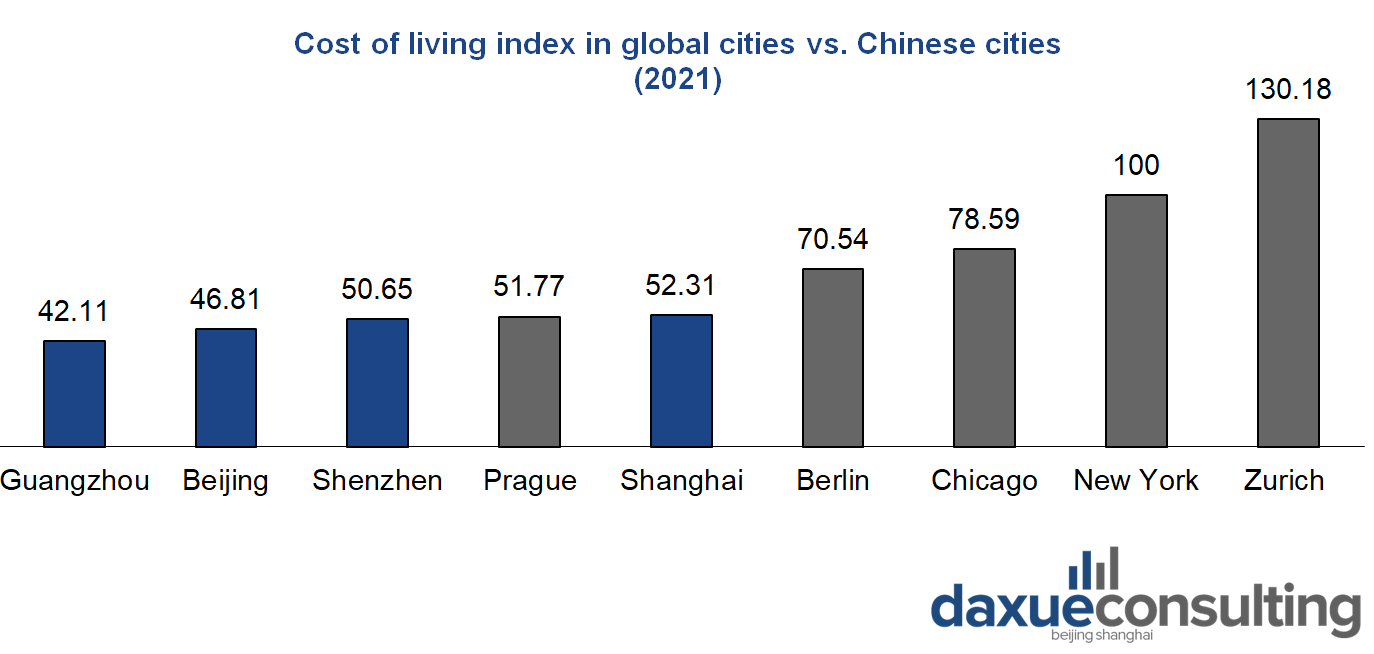
Product prices in Shanghai vs. Berlin
It is interesting to look at why products in Shanghai are more expensive when its cost of living index is higher. Reasons for the price discrepancies between Shanghai and Berlin can arise from various sources. For example milk is subsidized by the European Union and further enjoys a lower tax as it is categorized as an essential good. The same holds for preschool fees as the German government contributes 766 yuan (100 euros) monthly to the costs. Nevertheless, Shanghai’s preschools are still significantly more expensive. Moreover, the German government enforces a rent regulation that benefits the tenants, keeping the rent prices low. Germans therefore like to rent an apartment rather than own a house. In 2018 only 42.1% of German households owned a house versus 57.9% of the German households lived in a rental property. Owning a house is more important in China where 89.68% owned property in 2018.
Products that are less expensive in Shanghai than Berlin
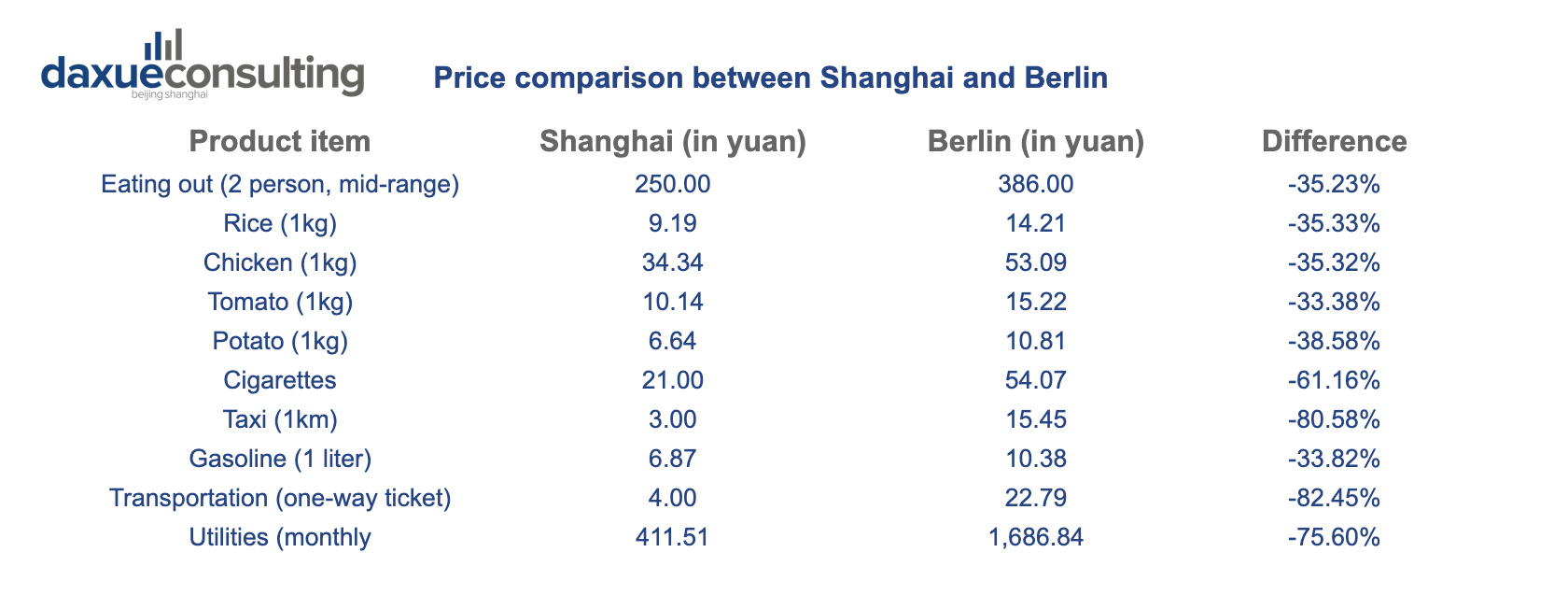
Subsidies are causing some price discrepancies in China
With subsidies, governments can help companies cover part of the costs. The government can boost the sales and growth of a specific industry. Moreover, it also offers companies the opportunity to ship the products internationally. Through the subsidies companies can offer their products at lower prices and hence can export more of their goods.
Steel is heavily subsidized in China
The Chinese government supports the local steel industry through subsidies on its products. One the one hand, the subsidies helped China’s steel industry to grow, on the other hand it heavily impacted the international steel prices and industry. China is able to offer steel at a roughly 20%-40% lower price than the US. The growth of China’s steel industry caused international steel prices to fall by roughly 57% from 2011 to 2015.
In the reports of the Chinese government to the WTO, they declared a subsidy of $4.4 billion handed out from China’s central government and $933,000 from local governments in 2016. However, experts believe that the subsidies are higher. According to a professor at Wichita State University, since 2000 the Chinese steel subsidies are likely to cover hundreds of billions dollars which lead to roughly 80% profit margin for the Chinese steel companies.
In fact, through the subsidy China manages to be the key producer of steel worldwide. Between 2015 and 2019, China alone was responsible for roughly 49%-53% of the worldwide steel production.
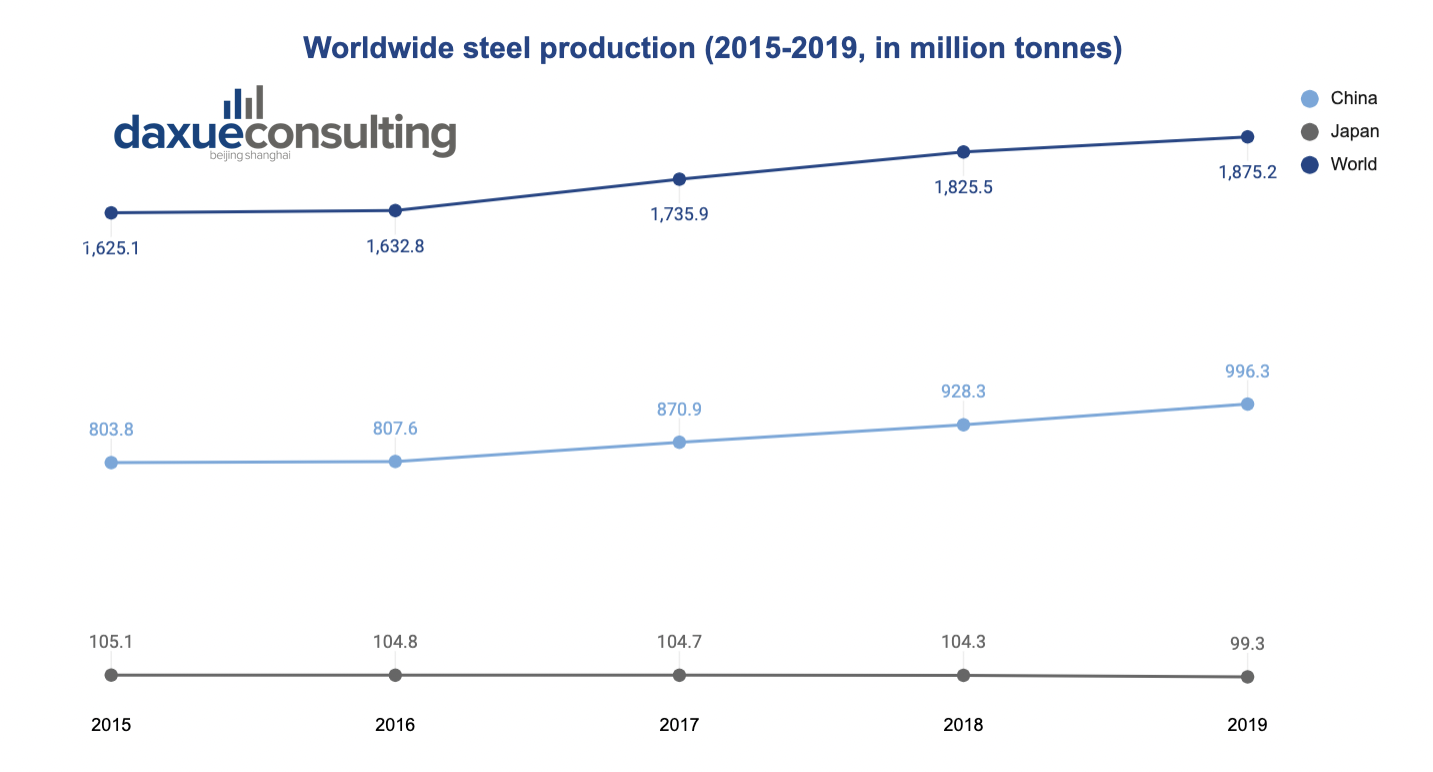
5 Key takeaways about price differences in China:
- Leverage the Big Mac Index to exploit currency over- or under valuation.
- Luxury brands are on average 20% more expensive in China, partially due to high tax rates. This is why many Chinese consumers buy their products overseas or in duty-free areas.
- Don’t assume a Western brand has the same positioning in China. A different brand positioning can lead to price differences in China.
- Chinese consumers are willing to pay more for products that show a prestigious logo, such as the Starbucks coffee cup.
- Government subsidies help industry to cut international prices and become competitive. China’s steel industry provides a good example of becoming the world leader through subsidies.




